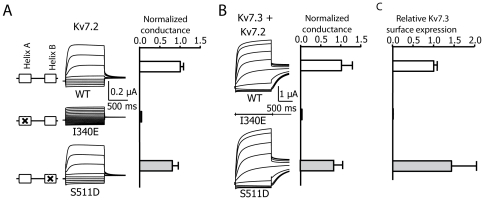Figure 2. The CaM-binding incompetent S511D mutant is functional, whereas the CaM-binding incompetent I340E mutant is not.
A. Left column, schematic illustration of the CaM binding region. Boxes represent helices A and B. Middle column, representative current traces from Xenopus oocytes expressing homomeric Kv7.2 WT, I340E or S511D channels. Currents were elicited by 800 ms jumps to potentials between -120 and +50 mV from a holding potential of -50 mV. Tail currents were measured at -20 mV. Right column, the difference in amplitude of the relaxation measured at -20 mV after a pulse to -120 mV and to +50 mV was measured. Bars show the mean relaxation amplitudes measured at -20 mV for oocytes expressing the indicated homomeric channels (n≥10). The difference in current between WT and S511D was not significant (Unpaired Student's t test). B. Representative current recordings from Xenopus oocytes injected in a 1∶1 ratio of cRNAs for Kv7.3, and Kv7.2, Kv7.2-I340E or Kv7.2-S511D. Right column, normalized average conductance. Bars represent the mean ± SEM of the normalized conductance of Kv7.2/3 heteromeric channels (n≥5). C. Normalized surface expression of Kv7.3 subunits tagged with HA in the extracellular S1-S2 loop after co-expression with Kv7.2, Kv7.2-I340E or Kv7.2-S511D. Xenopus oocytes were injected with a 1∶1 ratio of cRNAs for Kv7.3 and Kv7.2 (n = 12, two batches). The background of uninjected oocytes was subtracted and the values given are the means (± SEM) normalized to the values obtained from WT-Kv7.2/3 channels from the same batch. The difference in surface expression was not statistically significant (Unpaired Student's t test).

